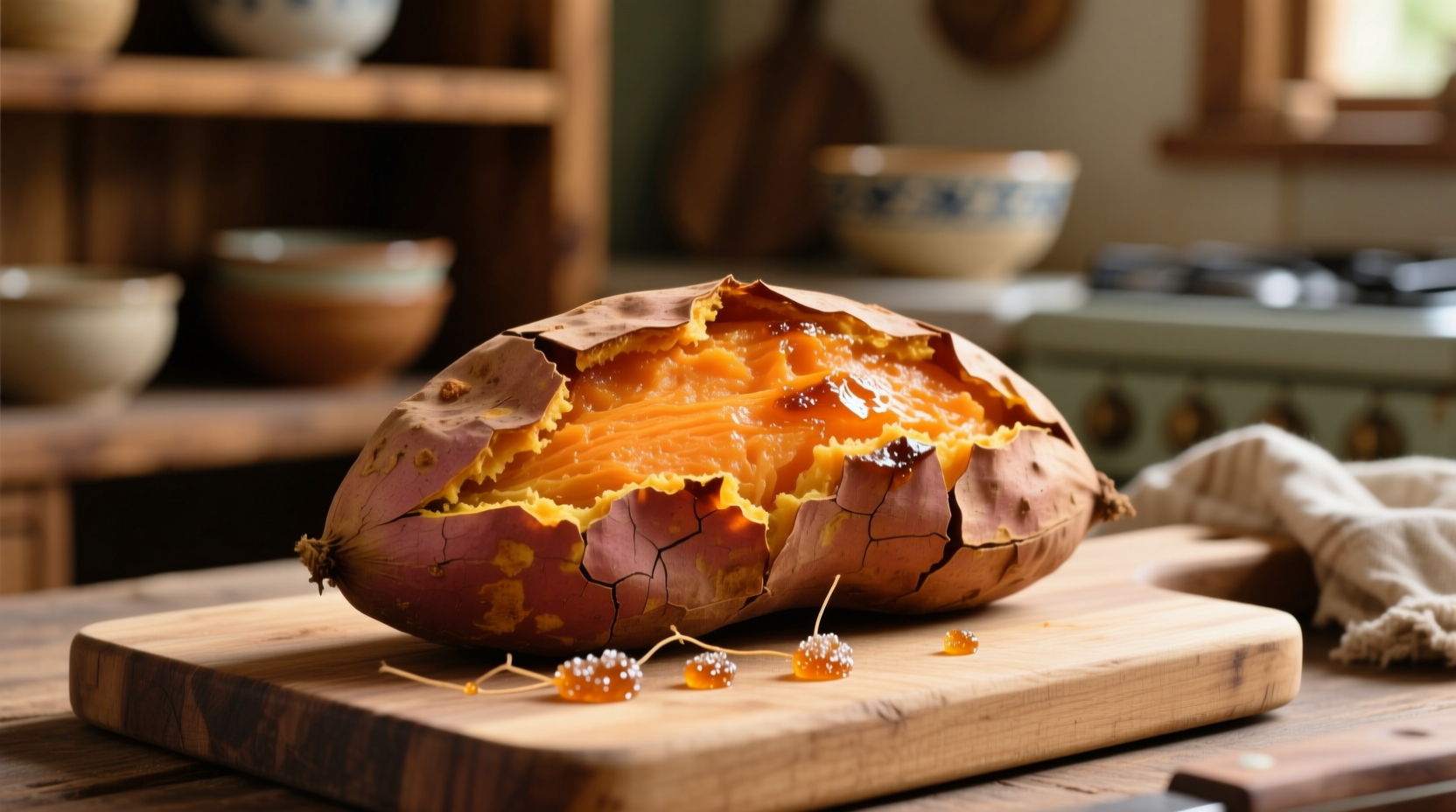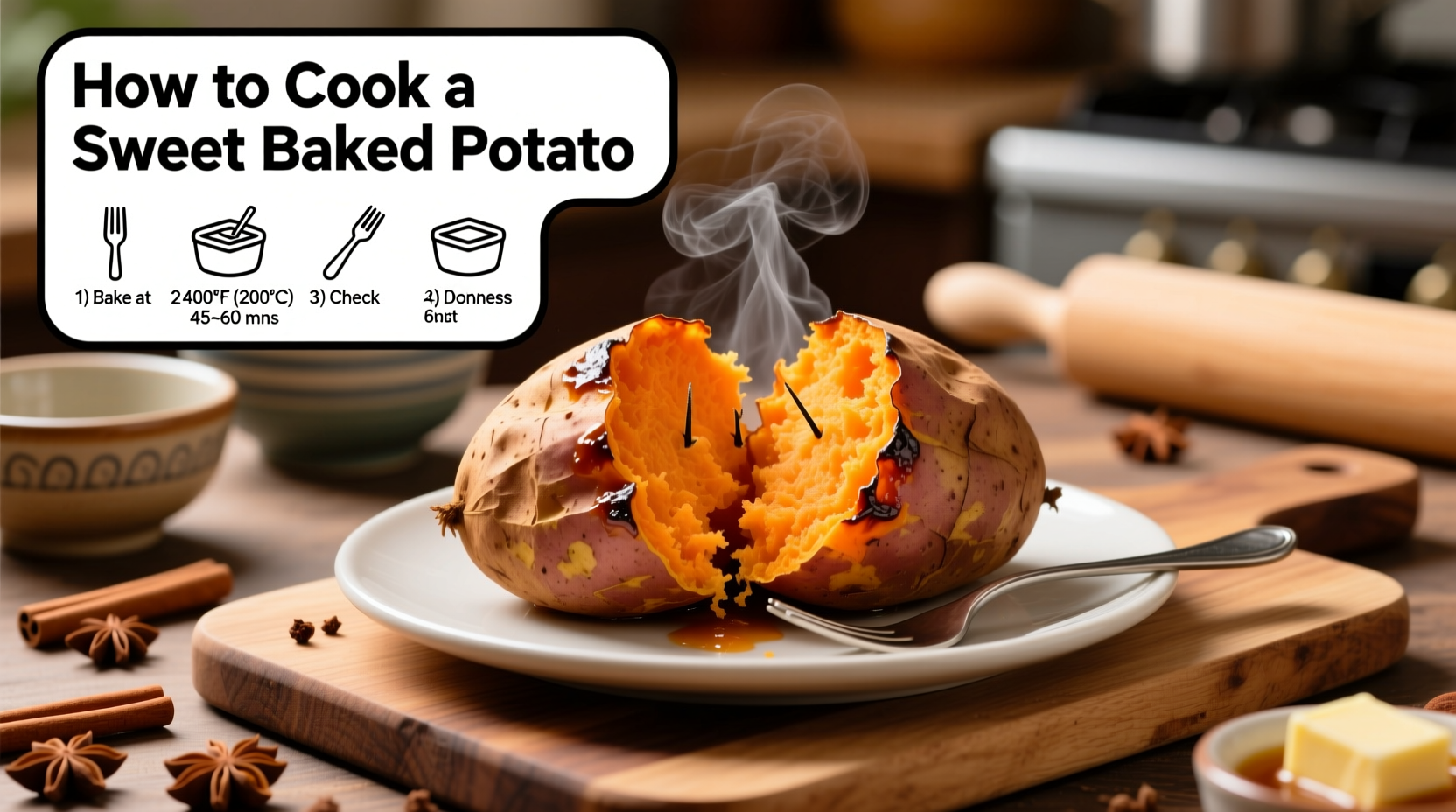Nothing beats the natural sweetness and vibrant color of a properly baked sweet potato. Unlike boiling or microwaving, oven baking concentrates flavors while creating that desirable contrast between caramelized skin and fluffy interior. Follow these science-backed steps for foolproof results whether you're cooking one potato or a dozen.
Why Oven Baking Beats Other Methods
While microwaves offer speed and boiling preserves nutrients, baking unlocks complex flavors through the Maillard reaction and caramelization. Professional kitchens prefer baking because it develops deeper flavor profiles without waterlogging the flesh. The slow, dry heat allows natural sugars to concentrate while maintaining structural integrity.
| Cooking Method | Time Required | Texture Result | Flavor Development |
|---|---|---|---|
| Oven Baking | 45-60 minutes | Crispy skin, fluffy interior | Maximum caramelization, complex notes |
| Boiling | 20-30 minutes | Uniformly soft | Muted sweetness, some nutrient loss |
| Microwave | 8-12 minutes | Soggy skin, uneven texture | Basic sweetness only |
Essential Preparation Steps
Start with firm, unblemished sweet potatoes of similar size for even cooking. Contrary to popular belief, piercing isn't just about preventing explosions—it allows steam to escape while concentrating sugars. Use a fork to make 4-6 deep punctures around each potato. Skip washing off soil completely; a light scrub preserves natural protective compounds that enhance flavor development during baking, according to USDA agricultural research.

Step-by-Step Baking Process
- Preheat oven to 400°F (205°C)—this higher temperature creates optimal caramelization
- Dry thoroughly with paper towels to ensure crispy skin formation
- Optional enhancement: Rub with 1/2 teaspoon oil per potato and sprinkle with flaky sea salt
- Direct placement: Set potatoes directly on oven rack with baking sheet below to catch drips
- Timing: Bake 45-60 minutes depending on size (15-20 minutes per inch of diameter)
- Doneness check: Internal temperature should reach 205-210°F (96-99°C) with fork-tender flesh
Critical Temperature Timeline
Understanding the internal temperature progression prevents under or overcooking:
- 135°F (57°C): Starches begin converting to sugars—critical for sweetness development
- 170°F (77°C): Cell walls break down, creating that signature fluffy texture
- 205°F (96°C): Optimal serving temperature with maximum flavor concentration
When to Choose Alternative Methods
While oven baking delivers superior flavor, certain situations call for different approaches. The National Sweet Potato Council recommends microwave cooking when preparing baby food due to better nutrient retention. For meal prep requiring multiple potatoes, restaurant chefs often combine methods—starting in microwave for 5 minutes then finishing in oven for crispy skin. Air fryers work well for smaller portions but struggle with larger batches due to limited capacity.
Serving and Storage Tips
Let baked potatoes rest 5-7 minutes before serving—this allows starches to set properly. Slice open and fluff with fork rather than mashing to maintain texture. For make-ahead meals, store cooled potatoes in airtight containers for up to 5 days. Reheat in 350°F oven for 15-20 minutes rather than microwave to preserve texture. According to food safety guidelines from FDA, reheated potatoes should reach 165°F internal temperature before consumption.
Flavor Enhancement Variations
Professional chefs recommend these pairings that complement rather than overpower natural sweetness:
- Classic: Brown butter and toasted pecans (enhances nutty notes)
- Savory: Crumbled feta and fresh rosemary (balances sweetness)
- Spiced: Cinnamon with a pinch of cayenne (creates flavor complexity)
- Healthy: Greek yogurt and pumpkin seeds (adds protein without sugar)











 浙公网安备
33010002000092号
浙公网安备
33010002000092号 浙B2-20120091-4
浙B2-20120091-4